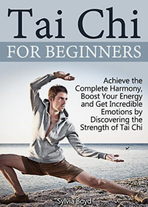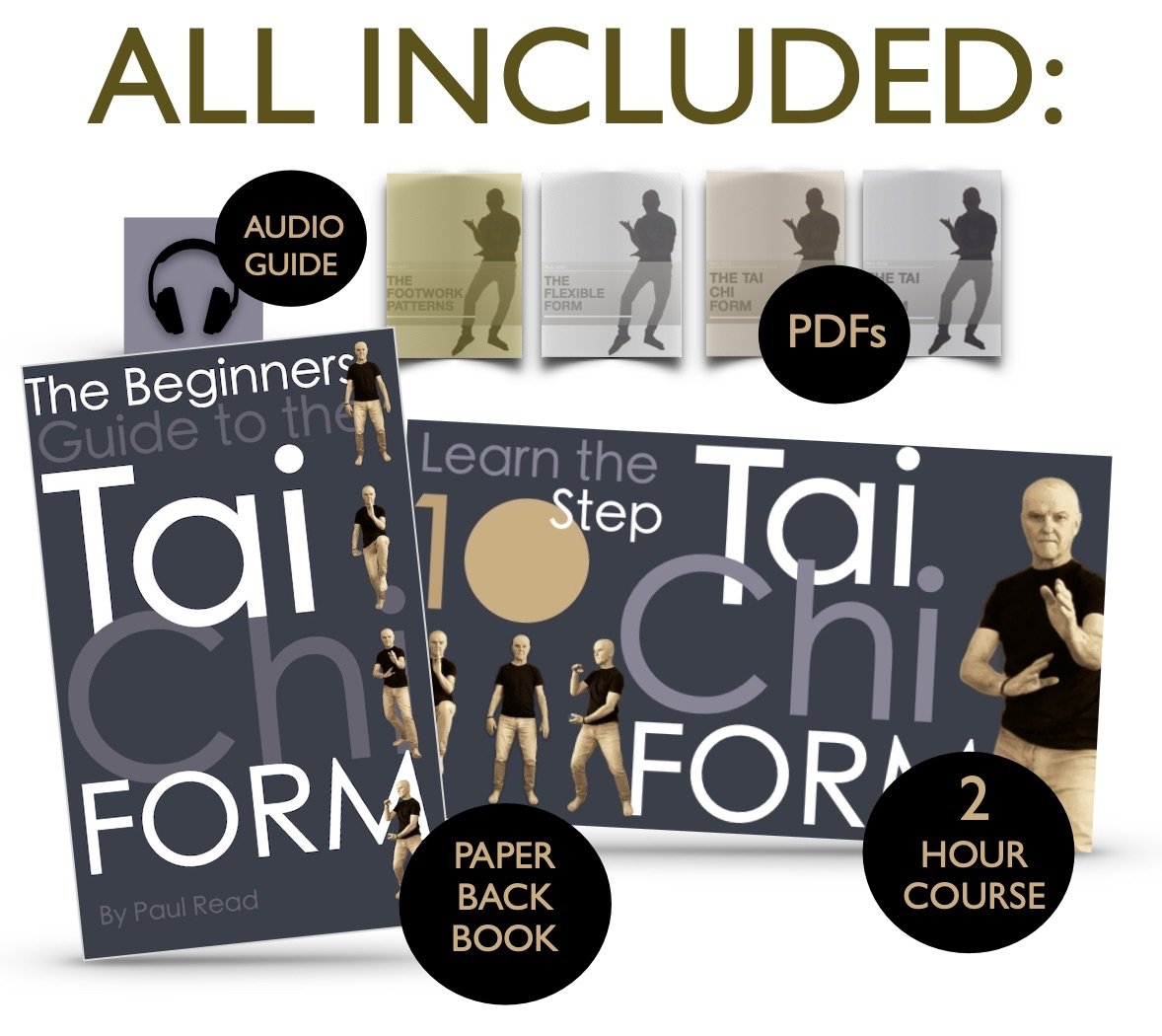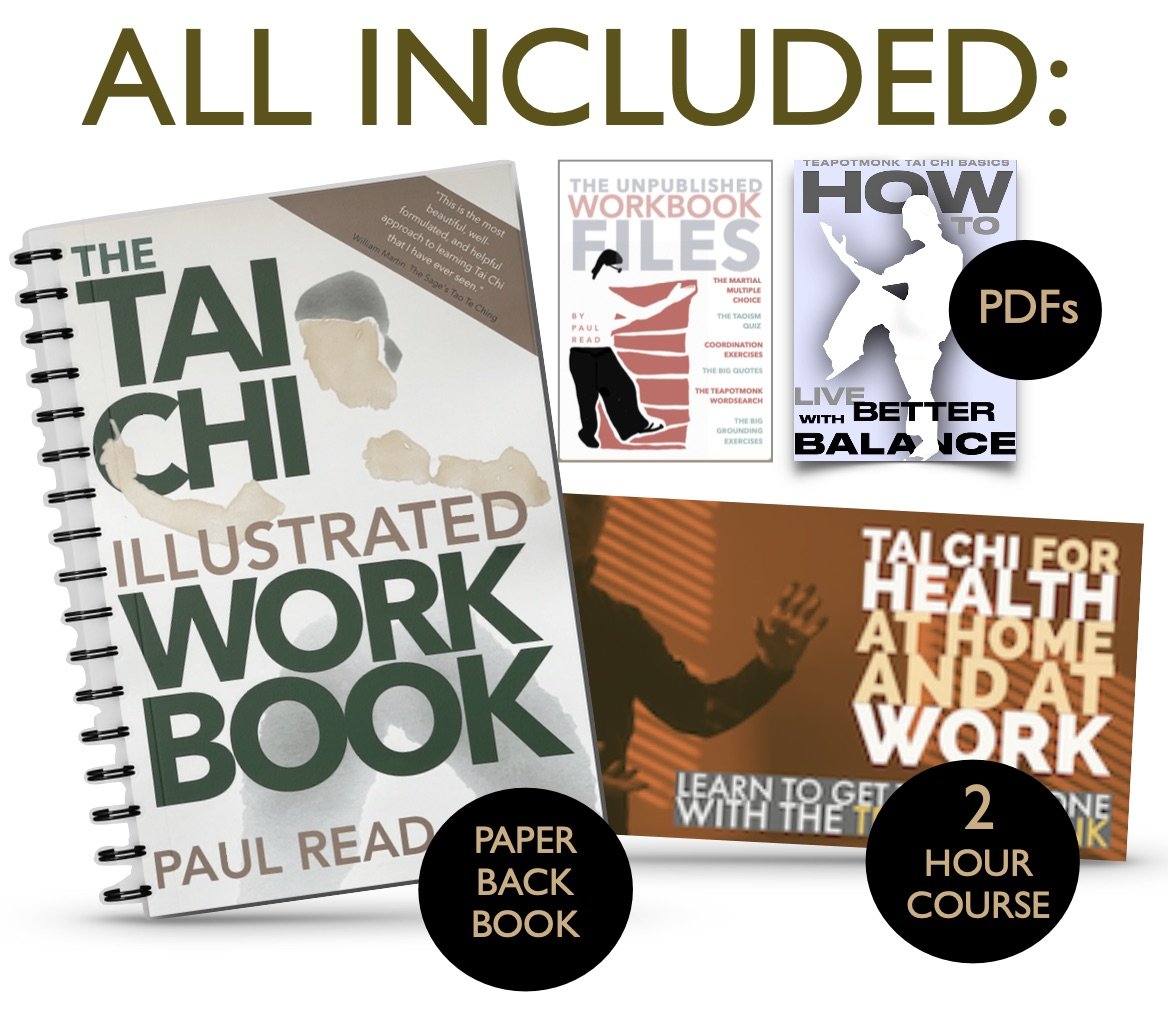The 10 Worst Martial Arts & Tai Chi Book Covers in History
CAN You Judge a Book By Its Cover?
They say you can’t judge a book by its cover. It seems a reasonable argument. However, scroll through an Amazon search for books on Tai Chi, Qi Gong or Martial Arts and I defy anyone to come up with more than a handful of reasonable designs that have not succumbed to both visual and textual cliches.
“Why would they have book covers if we aren’t supposed to judge the book by them? It makes no sense.”
Now, before I am universally condemned for releasing a series of Tai Chi titles that hardly break new artistic ground. I would like to say in my defence, they do what they say on the box. They do not infer X-Men super-powers showing light-rays emerging from orifices, nor do they suggest you will be able to defeat an oncoming tank with a secret death-grip passed down by Grandmaster Eyebrow-Monk. Sadly, many books in the world of the "Interior Arts" do promise such nonsense. Everything from Instant Pot-Noodle health-cures to Superman Powers of invulnerability. So the teapotmonk thought it was time to take a critical look. Read on and expect only the unexpected.
DOES A BOOK COVER TELL US SOMETHING ABOUT THE CONTENT?
First, before we delve into the 10, let me make it clear that this article is directed at book design and choice of titles and is in no way a criticism of the books content (well, not in every case). In fact, some of the following books contain excellent and really useful content, but are sadly let down by poor graphic design, disastrous promotional titles and comical strap-lines. This of course leads us to ask why this happened? Why would someone of considerable skill and capability permit their hard work to be depicted so inaccurately or so badly? Why would anyone agree to a title of " Achieve Complete Harmony" or "Get Incredible Emotions". It makes yoga, tai chi or karate seem like a collectable gift inside a packet of Cornflakes.
The internal arts have long suffered from cliche and vague descriptions that only obfuscate rather than elucidate. As practitioners, and especially as teachers, surely we have a responsibility to avoid perpetrating these images and descriptions?
MARTIAL ARTS BOOK COVERS: A picture tells a 1000 Words.
A book cover is more than just a pretty image that helps sell a book. It speaks about the content, the way the material will be presented and the way in which it will be contextualised. If you have a Tai Chi book cover with two people kicking each other, you know it will be stressing the martial aspects of the art (though the kick demonstrated here is not, I should add, from any Tai Chi style I recognise - nor is such a technique "for beginners").
Like it or not, people do read meaning into the images and title of a book - for that is the intent of the publisher. If you are considering, for example, buying a book with a cover that depicts someone levitating with a white light radiating from their anus, it tells us that this is a skill described inside. I can only hope this article has reached you in time and you will be spared the cost of purchasing it, or the embarrassment of where to hide it, once purchased.
So, without further government health warnings, let’s take a look at the 10 book covers that I have selected and placed into 4 simple categories.
1. Book Covers that Depict the Wrong Art
Would you buy a car manual for a Tesla if it had a picture of a Fiat Panda or a Caravan on the front? You wouldn’t expect to buy a book on How to Cook Pasta with a picture of a Rubik Cube on the cover either. So why do books on Tai Chi come with people doing Yoga, Karate or Gung-Fu on the cover?
In this book by Angus Clark - a book that is well written, comprehensive and demonstrated by an author that has considerable skill - the cover depicts a silhouette of a woman performing two yoga poses.
It should be mentioned at this point, that in many cases the author is not consulted about cover choice. In-house graphic artists just throw up whatever stock image they have access to without bothering to see if it is totally inappropriate. Perhaps in this case they thought that the Yoga poses would be lost amongst the fuzzy watercolour Yin Yang in the background. If I were Angus, I’d have asked for a 2nd opinion.
I'd imagine this cover by Calvin Hale came about for similar reasons. Though were I Calvin, I might have had a word with the publisher about the discrepancy between the subtitle of stress-free living and inner peace with a man standing rigidly on one leg, posing as though in a Mr Universe competition and poised to unleash a violent kick on someone.
In short, the cover misleads. The imagery contradicts all the principles of softness and relaxation that is inscribed in the basic principles of the art.
Of course I could be wrong and it is an accurate representation of the content inside. I have not read the book. But were this to be the case and it did represent the content, I’d have to add that it is wrongly titled and should in fact be renamed: How to increase tension and stress by adopting unhealthy postures.
2. Book Covers that Use Models rather than Practitioners
In this category we shall look at the use of photographic models on the cover image (and too often inside) in place of actual practitioners. Once more, this is likely due to Publishing Houses insisting on covers designed by their graphics department, who will rarely take into account the ideas and marketing thoughts of the author. Examples abound and sadly do little to convey the hidden benefits within. Giveaway signs for the uninitiated are that they are selected for their looks and squeaky-clean, freshly-ironed appearance rather than their capability or understanding of the internal mechanics of the art.
ON A FILM SHOOT: Back in the 80s, I once was employed to help with a film shoot. A British bank (that shall remain unnamed) was filming an advert about "free lifestyles" and wanted someone performing a little Tai Chi in their advert. I was to be the choreographer. It was my job to teach the chosen actor the fundamentals of Tai Chi in 30 minutes.
It was an uphill struggle. As competent as the actor was, there was no way he could relax his joints or muscles sufficiently to convey ease of movement in such a short time frame. His performance appeared not unlike one of those artists wooden models.
So I understand that sometimes, it is outside the hands of the author. Decisions are taken by Directors, Publishers or Marketing Teams that only see what they want to see. And so, at the end of the day they saw someone doing Tai Chi, whilst in my eyes I saw an awkward and clumsy robot.
In this example, the practitioner on the cover of this book (written by Paul Tucker, who I should point out that I once trained with and consider a very good teacher) has possibly been selected on the basis of skin tone, choice of clothing and ability to hold an angled posture for the camera, as opposed to someone who could embody the "flowing moves for harmony and balance" the book promises.
If you take another look at the Total Tai Chi cover (above these lines) you will find a similar theme. In the worse cases (not necessarily with these examples), this substitution continues throughout the inside of the book, using models for photographic purposes rather than practitioners for Tai Chi purposes. Marketing can be a strange beast.
I have found that this tendency to use models is more often found amongst publishers that offer a series of books on standard health practices. The graphics department presumably has a choice of stock images or models to work with and appear to select them alphabetically or by hair colour rather than according to any principles of the art. Unfortunately, this does little for the image and professionalism of their art either.
3. Book Covers that Imply SUPER-HERO Powers
Aside from book covers designed by the marketing team of publishing houses, there is another category of book covers that one assumes the author had too much control over. Perhaps this is a good reason for the marketeers to have more say, for in this category they depict Tai Chi as a supernatural art or a cosmic practice that installs super-human strengths. They would not look out of place in a shop full of comic-books.
Sadly, a lot of martial arts and eastern philosophy books use similar illustrations and images to sell themselves, showing people flying through the air, or being thrown back by a whirlwind of "Chi energy".
The reason they are listed here is that they prey on our insecurities and exploit the stereotypes of the Eastern martial artist or Wise Sage. They promise abilities and powers that have little do do with the simple benefits that attract practitioners to the art and that are delivered by regular practice and dedication, rather than the summoning of extra terrestrial powers.
This crude selling of the art on mystical properties does little to bring the art into the fields of practical and evidence-based modern health care or even practical self-defence. This is not to say that there are benefits science has probably yet to account for in the practice of the internal arts, and that we should all maintain an open and inquisitive mind. Just don't peddle it as a super-power or a method to “enliven the Brain”. Apart from being linguistically nonsense, this will only return the arts to the 18th century, when we should be looking to bring them afresh into the 21st.
BOOKS AND COURSES
Start with a paperback and a course that you will finish. Order the Beginners Guide to the Tai Chi Form paperback and get this complete back up course online thrown in, with Extra PDFs and audio guide for just £11.95.
Explore Tai Chi visually and interactively with the big Illustrated Workbook and Free Tai Chi for Heath Course. Just £19.95
4. Book Covers that are just Bad Publishing Choices.
The final category is again down to the publishers. Whether the authors concurred with the choice of cover or selected title is unknown, From publishing a book called Tai Chi Nude (see below) to selecting the image of Jwin-Ming (With "New User-friendly design"), questions inevitably arise. I'm sure Tai Chi Sword is a fine book and the overall design is not unpleasant, it's just that for a "Best Selling Author" and man responsible for making the "greatest Impact on the martial arts in the last 100 years" I feel the graphics-bar should have been set a little higher. Of course, perhaps it was intentional that he would wish to be seen as though frozen on the loo whilst taking his pulse (yes, I know its sword hand position) but - and I’m speaking personally here - the message can be easily lost.
Of course you could just plumb for the set of 48 tai Chi Cards “based on the body language” of Tai Chi. Though you may, with good reason ask: Do not Tai Chi Forms and postures follow set sequences, worked out in advance? Personally, I quite like the idea of shuffling the cards around and seeing what order your postures turn up. But would a beginner? Perhaps someone more advanced in practice may make sense of such a strategy, but would they be tempted by a Tai Chi card set demonstrated by a Golden Goddess and her energy balls? I'm not so sure...
And should you still be wondering about that Tai Chi Nude. A word of warning. I wouldn't suggest a google search with the kids around. In fact I wouldn't suggest a google search on the subject with myself around either. I suspect, like most arts that are seen as based in 'nature', some practitioners have decided that its ultimate expression should be unhindered by the trappings of clothing. But I leave it to you to decide where you stand on the issue.
FINAL COMMENTS FROM THE TEAPOTMONK
It all reminds me of the worse Kung-fu flicks of the 70s and 80s, a time when Kwai Chang Caine could (try to) get away with pretending he was of Chinese descent. One had to remember, consistently, that it was a TV series and not real life. The moment you thought it was real, and tried to emulate his fighting techniques, you soon realised why it only ever looked good on TV. Tai Chi doesn't need to resort to such depths. It has plenty of good stuff to sell without resorting to magic or spirit powers or Jedi warrior special effects.
So what can you take from any of this? Simply, be careful about content - whether that be book sleeves or titles or photoshopped images. We live in an era in which the most mundane can reach prominence and be shared quickly though social media and where few of us find the time to investigate beyond the headline. Perhaps, were we to slow down a little, as Tai Chi teaches us, to take time to explore and have the patience to learn slowly, methodically and examine further than what is on the surface, we may discover the true value of what lies beneath.
More Articles you may like:
LOOK AT TAI CHI FROM ANOTHER PERSPECTIVE
Step back. crouch down, or squint and take a fresh look at what is happening in the world of Tai Chi. Follow the teapotmonk using the links below.
















